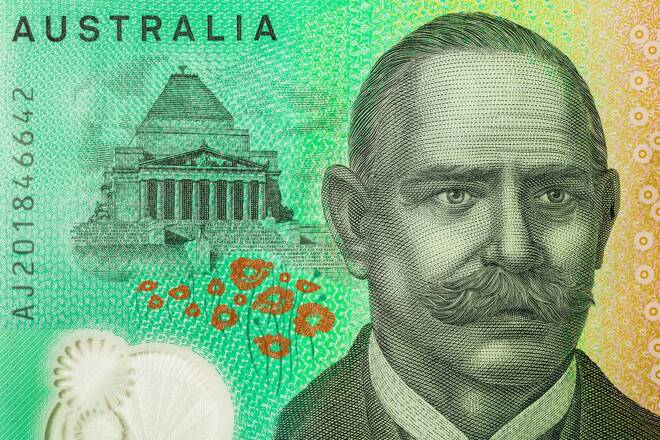Advertisement
Advertisement
AUD to USD Forecast: Factors Influencing the Australian Dollar’s Path to $0.64
By:
Explore the recent performance of the AUD/USD pair and the pivotal role of China's economic data, RBA commentary, and Fed rate hike bets.
Highlights
- AUD/USD gained 0.36% on Tuesday, following a 0.75% rally on Monday, closing at $0.63648.
- RBA chatter and China’s economic data take the spotlight on Wednesday.
- However, news updates on the Middle East conflict and Fed commentary also need monitoring.
Tuesday Overview
On Tuesday, the AUD/USD gained 0.36%. Following a 0.75% rally on Monday, the Aussie dollar ended the day at $0.63648. The Aussie dollar fell to a low of $0.63320 before reaching a high of $0.63798.
RBA Chatter and the Chinese Economy in the Spotlight
Economic indicators from China will set the tone for the Wednesday morning session. Industrial production, fixed asset investment, retail sales, unemployment, and Q3 GDP numbers will garner interest.
The Q3 GDP figures will impact market risk sentiment. The GDP figures will indicate the effectiveness of Beijing’s stimulus measures.
However, the September industrial production, retail sales, and unemployment numbers also warrant consideration. Better-than-expected figures could signal a pickup in economic activity at the end of the quarter.
Increased economic activity in China is a boon for the Australian economy and the Aussie dollar. China accounts for one-third of Australian exports. With an Australian trade-to-GDP ratio above 50%, weak demand would impact the economy and the Aussie.
Beyond the numbers, RBA commentary may also move the dial. After the hawkish RBA meeting minutes, RBA Assistant Governor Michelle Bullock is on the calendar to speak. The Aussie dollar may respond to policy forward guidance ahead of the data deluge from China.
US Housing Sector, the Fed, and President Biden in Focus
Later today, US housing sector figures need consideration. A slump in housing sector conditions would impact the US economy and the US dollar.
The housing sector contributes less than 20% to the US GDP. However, weaker conditions would impact consumer confidence and consumer spending. US private consumption accounts for more than 65% of the US economy. A slump in consumption would raise the threat of a hard landing.
FOMC member speeches will also influence the investor appetite for the US dollar. Voting members Christopher Waller, John Williams, Michelle Bowman, and Patrick Harker will speak on Wednesday.
Short-Term Forecast
The near-term outlook hinges on economic indicators from China, Fed interest rate bets, and the Middle East conflict. A pickup in economic activity in China and a de-escalation in the Middle East would support a return to $0.6450.
AUD/USD Price Action
Daily Chart
The AUD/USD remained below the 50-day and 200-day EMAs, affirming bearish price signals.
An AUD/USD break above the $0.63854 resistance level would support a move to the 50-day EMA. Hawkish RBA commentary and better-than-expected numbers from China would fuel demand for the Aussie dollar.
However, weak numbers from China and hawkish Fed commentary would support a fall to the trend line and $0.62749 support level. Buying pressure will intensify at $0.63. The trend line is confluent with the 0.62749 support level.
A 14-period Daily RSI reading of 45.90 suggests an AUD/USD fall to the trend line before entering oversold territory (typically below 30 on the RSI scale).
4-Hourly Chart
The AUD/USD sits above the 50-day EMA while remaining below the 200-day EMA, sending bullish near-term but bearish longer-term price signals.
A break above the $0.63854 resistance level would support a move to the 200-day EMA.
However, a fall through the 50-day EMA would bring the trend line into play.
The 14-period 4-Hourly RSI at 54.22 indicates an AUD/USD move to the 200-day EMA before entering oversold territory.
About the Author
Bob Masonauthor
With over 28 years of experience in the financial industry, Bob has worked with various global rating agencies and multinational banks. Currently he is covering currencies, commodities, alternative asset classes and global equities, focusing mostly on European and Asian markets.
Did you find this article useful?
Latest news and analysis
Advertisement
